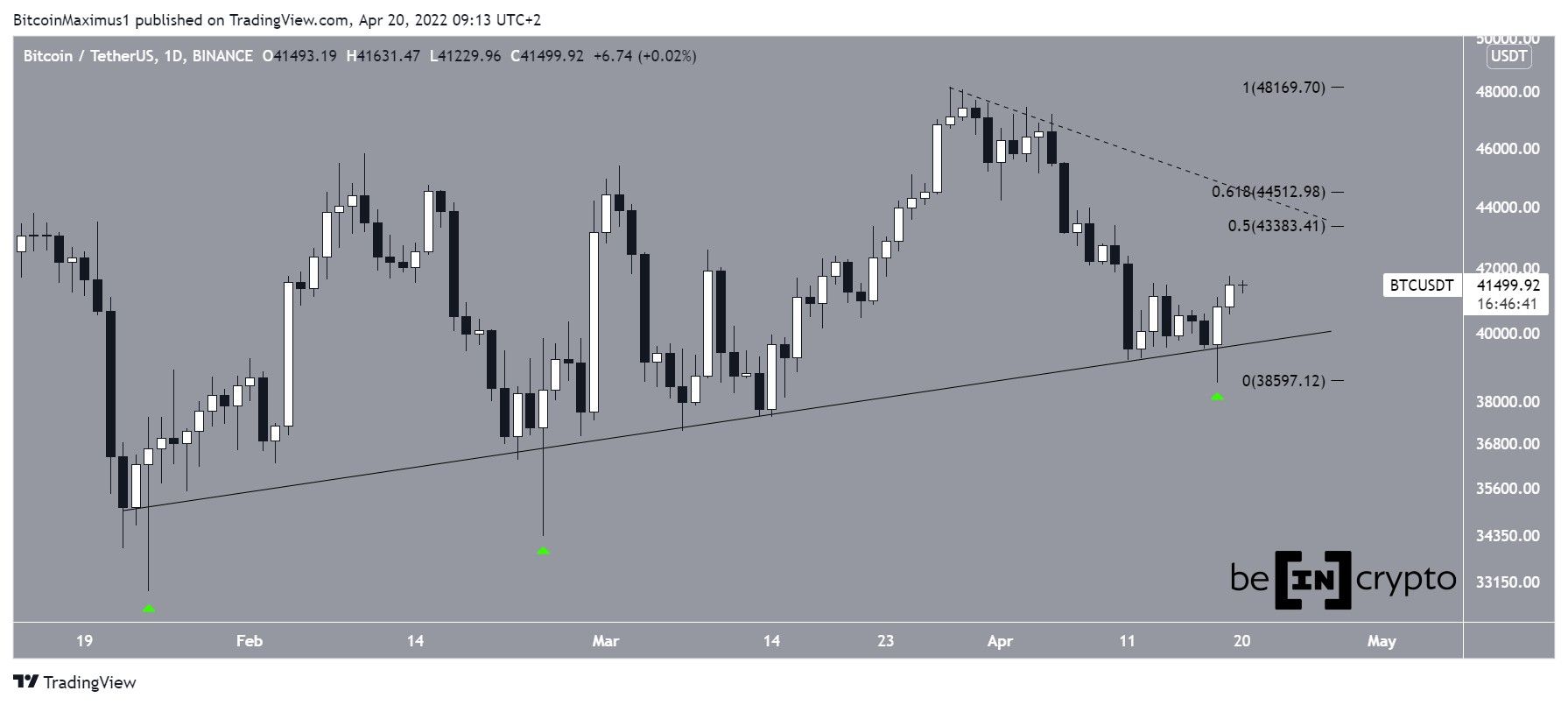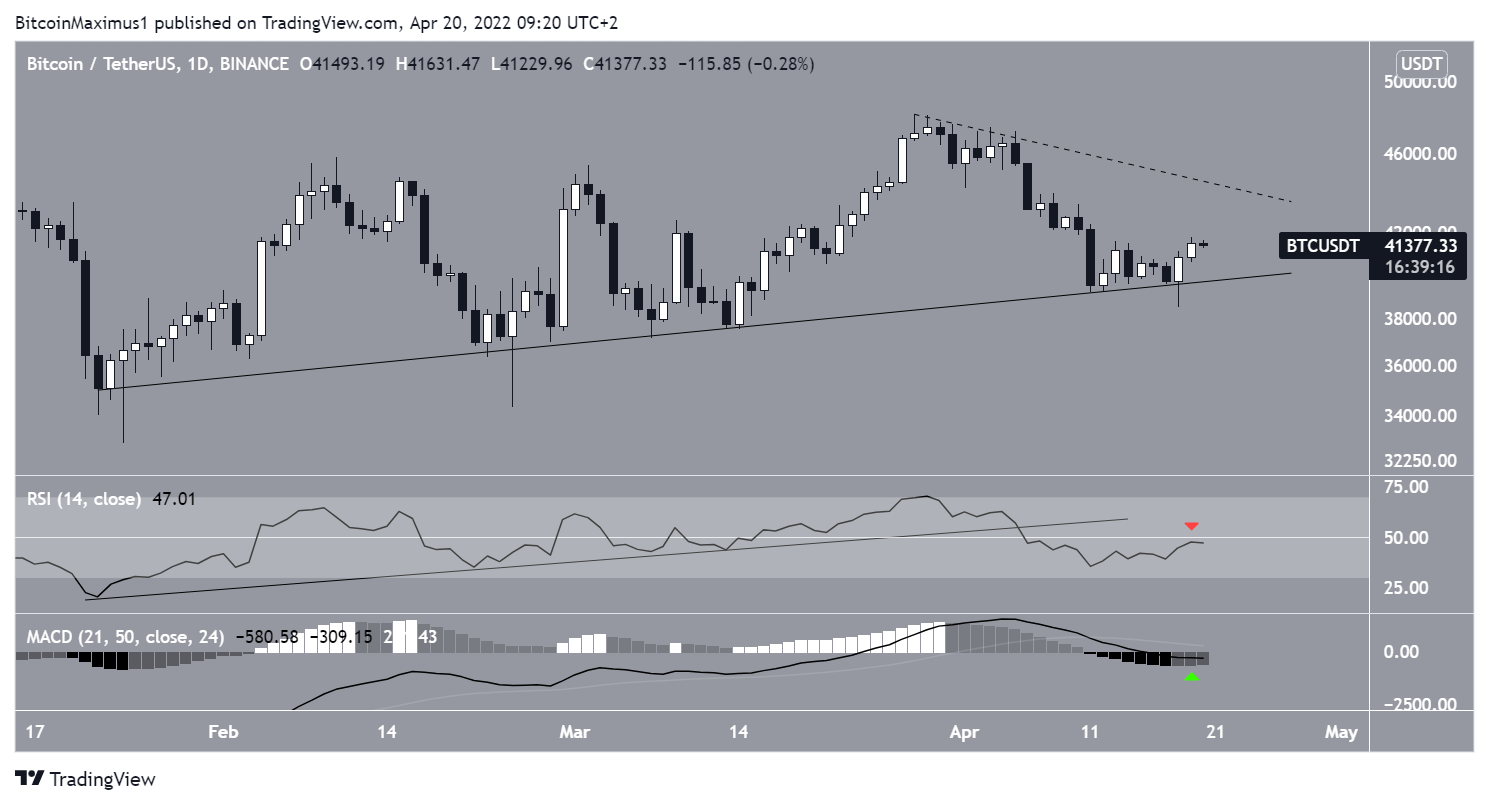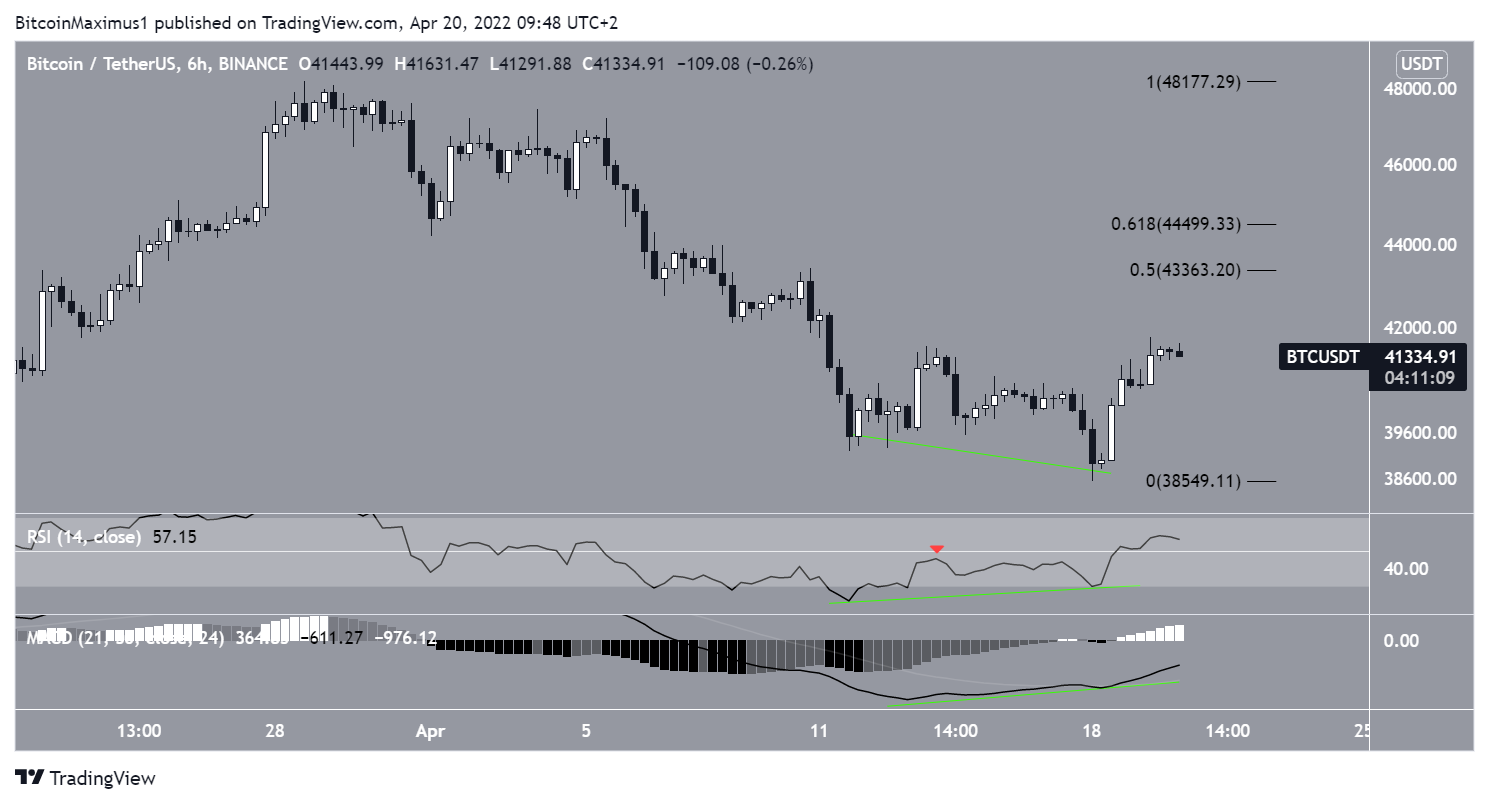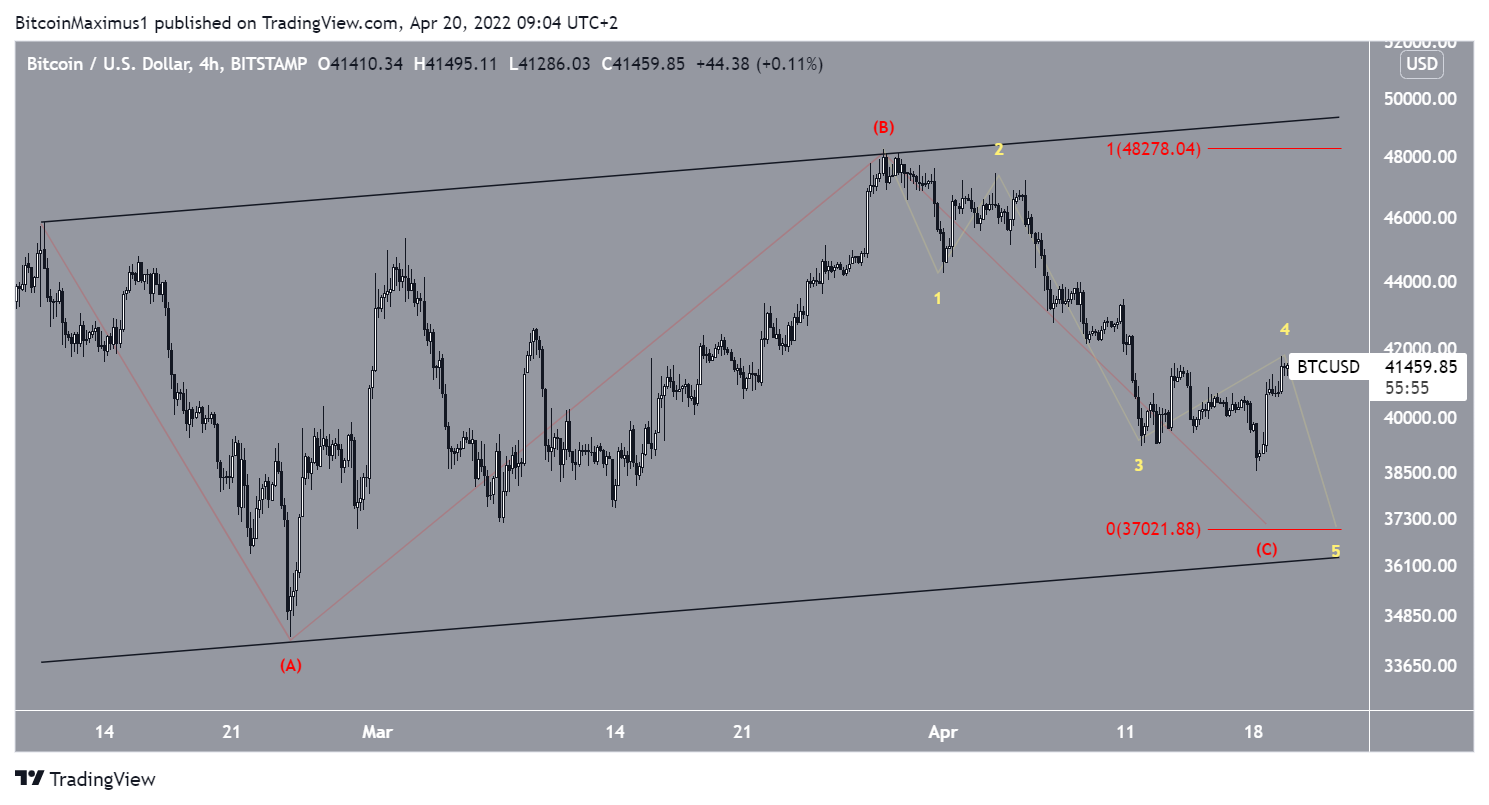Bitcoin (BTC) increased considerably on April 18 and 19, suggesting that the correction that’s been ongoing since the beginning of the month might have come to an end.
After creating a bullish engulfing candlestick on April 18 (green icon), Bitcoin resumed its upward movement the next day, leading to a high of $41,760.
The first part of the increase is similar to that which transpired on Jan. 24 and Feb 24 (green icons), when BTC created a very similar candlestick in the daily time frame.
SponsoredIf the upward movement continues, the closest resistance area would be between $43,380 and $44,510. This resistance is created by the 0.5-0.618 Fib retracement resistance levels and coincides with a descending resistance line (dashed).
Mixed readings
Technical indicator readings in the daily and six-hour charts provide conflicting readings for BTC.
The daily RSI is decisively bearish. It has broken down from a long-term ascending support line and has been rejected by the 50-line (red icon). These are both considered signs of a bearish trend.
The daily MACD is mostly bearish since it’s decreasing and is negative. However, it’s showing signs of strength by creating successive higher momentum bars (green icon).
SponsoredOn the other hand, the six-hour chart is more definitively bullish. It shows bullish divergences in both the RSI and MACD.
The movement above the high between the divergences (red icon) also completed a failure swing top pattern. This confirms the bullish divergences and suggests that an upward move towards the 0.5-0.618 Fib retracement resistance area is likely.
SponsoredBTC wave count analysis
There are two potential wave counts still in play, both indicating that BTC is moving in an A-B-C corrective structure (red).
The first count suggests that BTC is at the top of sub-wave four (yellow). In it, the price will likely decrease toward $37,000, giving waves A and C a 1:1 ratio.
The long-term wave count is also bullish and supports the continuation of the upward trend.
SponsoredThe second possibility suggests that BTC has already completed the entire five-wave downward correction. While this is still a legitimate possibility, the ratios do not fit as well as the previous count.
More specifically, waves A and C have a less than 1:1 ratio and sub-wave five is tiny in relation to the other sub-waves.
Therefore, based on the wave count alone, the first scenario is more likely to play out.
For BeInCrypto’s previous Bitcoin (BTC) analysis, click here






